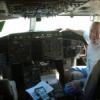
Sign in to follow this
Followers
0

AD 2002-19-52 Do you guys know about that? center fuel tank
By
aberg, in PMDG 737NGX | 737NGXu


By
aberg, in PMDG 737NGX | 737NGXu